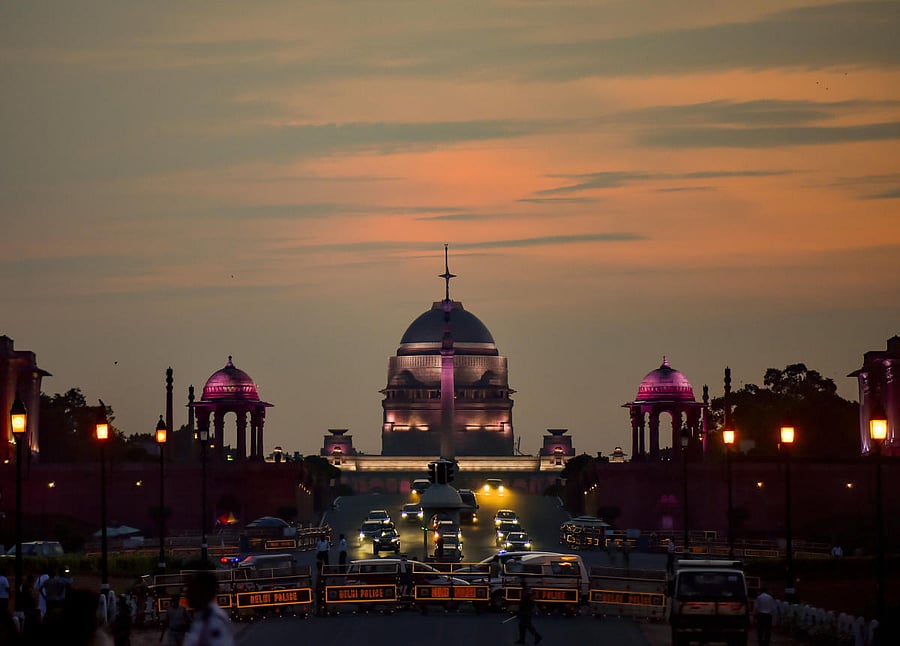
But the Indian mass struggle for independence has always been unique in it’s largely peaceful and non-violent methods and one can argue that it has inspired countless others around the world.
Many protests and campaigns in the pre-independence era helped chip away at Britain's hold on India. This list brings out those big ones which had an overall impact on the nation and beyond.
Swadeshi Movement
In 1905, the decision of separating Bengal to tackle the growing population was made public. This was met with widespread protests all over Bengal. In retaliation, Indians started boycotting British goods and even burned them to voice their message of protest. From boycotting British schools to products, Indians took a strong stance in their choice of rejecting anything foreign. Swadeshi, as a strategy, was a key focus of Mahatma Gandhi, the father of the nation, who described it as the soul of Swaraj (Self-rule). Even the youth actively participated in the boycott movement. Eventually, this movement became an important one for the country because it made the nation realize their potential and self-worth.
Satyagraha
The main objective of 'Satyagraha' is to steer away from violence and to protest peacefully against injustice. The first movement started in Champaran, Bihar during 1917 and the whole idea was developed and coined by Gandhi. His ideology would go on to influence personalities like Martin Luther King, James Bevels in the USA.
Khilafat Movement
Under the leadership of Indian Muslim leaders like Shaukat Ali, Mohammed Ali Jauhar and Abul Kalam Azad, and allied with Indian nationalists, a strong Hindu-Muslim bond was forged to oppose the British. Its purpose was to pressure the British government to preserve the authority of the Ottoman Sultan as Caliph of Islam following the breakup of the Ottoman Empire at the end of the war. The famous Jamia Milia university was built around this time by leaders like Dr Ansari, Maulana Azad and Hakim Ajmal Khan who had envisioned a space for independent education for Muslims.
Non-Co-operation Movement
This movement started in an atmosphere of dissent following the Jallianwallah bagh massacre and the introduction of the draconian Rowalatt act. Mahatma Gandhi used the opportunity to channel the anger against the British rule in India, through non-violent means. During this movement, which lasted for two years from 1920 to 1922, Gandhis' power to influence the masses was noticed by all. However, after the violent Chauri Chaura incident, which caused the death of 22 policemen, Gandhiji immediately directed to withdraw the movement. His decision was not widely accepted by everyone. Jawaharlal Nehru and Bhagat Singh were amongst those who didn't appreciate the decision open-heartedly.
Civil Disobedience Movement
Considered to be one of the boldest strikes by Mahatma Gandhi, the non-violent, civil disobedience movement aka the salt Satyagraha and Dandi march was a full-fledged campaign against the British salt monopoly. Gandhi's explained that salt is a very necessary item, especially for the poorer section of society, who were affected by the surge in salt tax. It proved to be a remarkable viewpoint and gaining major support from the nation. This movement gained fame worldwide, especially in the favour of Mahatma Gandhi. In,1930 Time magazine declared Gandhi as the man of the year.
Quit India Movement
On 8 August 1942, another outstanding movement was initiated by Mahatma Gandhi with his famous Do or Die speech. He demanded an end to the British rule in India. Interestingly, this movement did not get wide support from the business class who were benefitting from the wartime trade. Lack of coordination within party members and an absence of a profound programme of action, in a way, failed the movement. However, scattered protests did take place all over the country but that alone could not save the Congress party and Mahatma Gandhi from earning criticism. But it was successful in garnering some pressure from outside as President Franklin D. Roosevelt pressured Prime Minister Winston Churchill to give in to some of the Indian demands.
